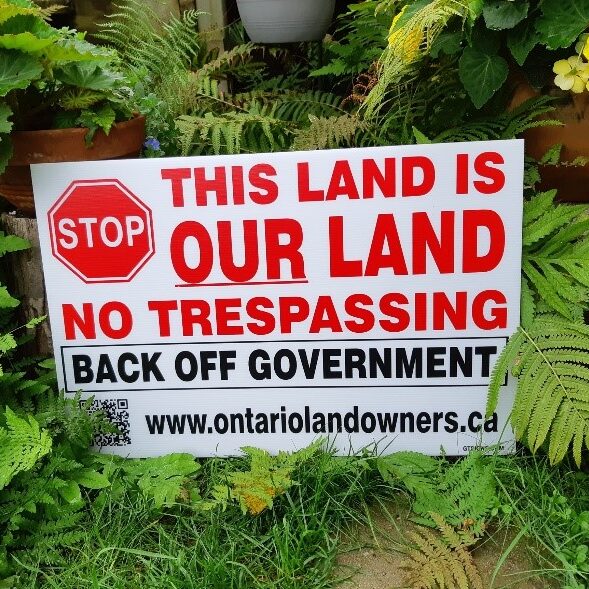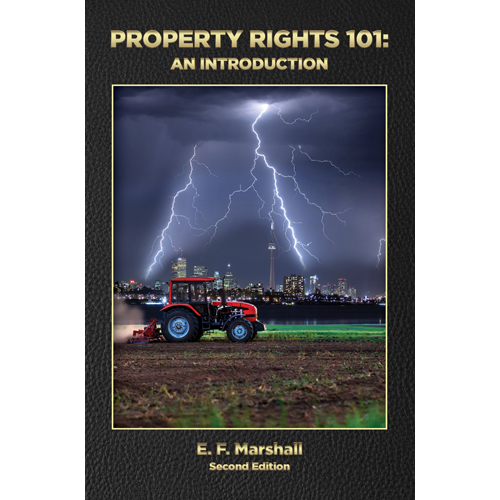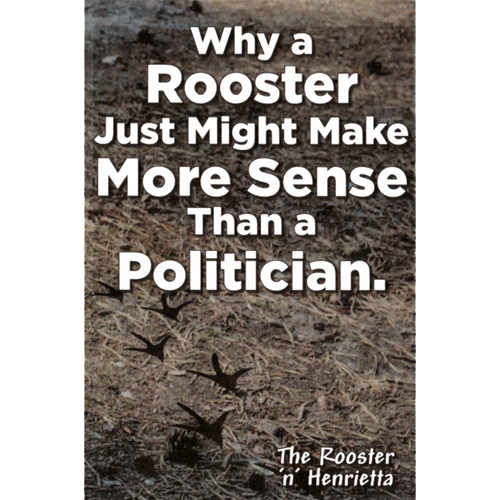Disruptions in Land Rights of Real Property by George R Canning
- 2018-01-01
- By admin
- Posted in Latest News
In 40 years of being a real estate consultant, the conclusion that I have reached is that most lawyers, the Courts and real estate practitioners do not understand Property Rights. The only place where I find that they do have some understanding is under the Expropriation Act of Ontario. Here a piece of property is taken for road widening or an easement is needed for some type of a pipeline. Under the Act compensation is quite clear: Property Value Loss is attributable to the “Taking”, Damages, Injurious Affection and Business Loss. In other words, it is all spelled out. Going beyond Expropriation, obtaining compensation for property right damages is about the equivalent to living in the Wild West and the luck of the draw. The problem is simple: most people don’t know where land rights come from or how to deal with them when they get trampled on or taken away. They are used inexcusable when one landowner wants to impose their land rights on neighbouring properties. Usually it is by some Authoritarian organization in which they have made the rules to fit their purpose and with little regard for anybody else.
When someone owns a piece of real estate in Ontario, the ownership is in Fee Simple. Fee Simple is the most common type of land ownership and is often referred to as “an estate in fee simple”. If there is a Right of Way that runs with a property, then the land rights are in Fee Simple together with an interest in a Right of Way which might either be on the same property or on the adjacent property. The Fee Simple land rights were borne out of the Common Law system in England and came to Canada, for example, with the Hudson Bay Company.
The Fee Simple interest is a summary of one’s rights that are accepted as Absolute but never discussed in any deed nor pointed out in many land compensation cases. So here they are. The rights that run with the Fee Simple are: the right to use the property, the right to give it away, the right to mortgage it, the right to lease it, the right of quiet enjoyment and the right to sell it. It also means that you have to be respectful of the property owners that are adjacent to your own. You cannot cause any harm to another person’s property just because you own land beside it. Your Absolution if you will, comes with protecting your neighbours property from damage caused by you.
In cases whereby, a parcel of land is damaged because of contamination or issues with obnoxious smells, noise, flooding, etc, the reaction by the recipient owner is always the same: “I need to be compensated for the damages that you caused to my property”. “I want to be compensated now!” The landowner will contact a lawyer and the process is underway. The owner feels that justice will prevail and common sense will rule the day. In many cases, common sense just left the building and justice is as elusive as trying to catch the wind. In actual fact the case will most likely drag on for 3, 5, 7 or 10 years without any compensation to the landowner even when the person that
caused the damages openly omits the error. So why is there just a failure of our system to protect property rights?
There appears to be an absence in our Legal System in the lack of understanding between the relationship of how the damage to the property in question impacts the Fee Simple Rights and ultimately what that means to the value of the property as well as the psychological damage to the owners. In the case whereby the little boy that breaks a baker’s window, the Legal System gets stuck on the “shape”, “size” “age” of the stone. It will hire all types of engineers to talk about the trajectory of the stone and if the stone had hit the window at a 43 degrees angle instead of 44 degrees, the damage would be less severe. The lawyer for the boy will demonstrate that because he was fed toast in the morning for breakfast instead of what he really wanted(pizza) this caused a resentment to any bakers and thus the reason for breaking the window. Therefore, the boy is completely innocent of the act. That leaves the shop keeper to clean up the mess and pay all the bills.
The matter ends up going before the Courts and here the case is put off for some legal reason or the Judge asks for more technical reports and information. The owner returns to the Courts with the requested information and behold the Judge now wants another study completed. This whole process ends up taking years. In the many cases Canning Consultants, Inc has been involved with three things are ultimately certain
(A) The landowner with the damaged property goes broke.
(B) The lawyers make a lot of money.
(C) The stress that the landowner of the damaged property goes through is unimaginable and in some cases contributes to the death of these individuals. You don’t have to be a Doctor to see the effect it has on the human spirit and body. The stress comes from the fact that these landowners are made to feel that they caused the contamination or issue not the other party. They feel guilty over nothing and are set about with an underlying nagging of an injustice whereby there is no justice for the innocent or any relieve from the pain and the stress of it all. While the person that caused the problem sleeps like a baby.
In fact, the whole process of dealing with disrupted land rights caused by damaged real estate is so disjointed that it is incomprehensible by logical standards. One issue that has arisen is the use of the cost of the cleanup as a pre-emptive solution to compensation. The landowner hires an engineering firm to calculate the cost of the clean up or to fix the problem. The Courts do not see this figure as anything meaningful. They want the following question answered: “What is the monetary “loss” to the real estate as a result of the spill, contamination, or problem?”. “In essence what the Courts are saying is that the cost of the cleanup figure is nothing more than that. It does not represent the actual “damage” to the property. It is an interesting point of view.
In the valuation of damaged real estate, one would find similar compromised properties that had sold and they are used as a comparative basis to the property under appraisal. The problem is that comparables of damaged properties are rarely sold. If you can find them they are not generally comparable to that of the property in question.
Since there is no direct market evidence of what “damage” is worth, it is imperative to follow a simple progression of valuation. It is important to know three things: A) the value of the damaged property “before” it was damaged, B) the cost to cure the damage and C) the value of the property with the damage in place.
A and B provides a valuation base line and allows the Valuer to start somewhere regarding the actual impact the damage has caused to the property in question. A simple example is best. If the property was worth $10,000 “before” the damage and the cost to remediate is $100,000, then it really defines what the property is going to be worth with the damage in place. However, if the property was worth $750,000 before the damage and the cost to remediate is $1,000,000, then we know the impact of the damage is somewhere between $0.00 to $750,000. We know this by simple deduction and the impact of the clean up costs on the property. In our opinion the cleanup cost is an important number only relative to the value of the property “before” the damage. Here we can link the two figures together and prove
to the Courts that the loss has to be somewhere in that range. The problem is dealing with the C part of the valuation equation. We know that real estate markets are not absolute and are imperfect. So how does one place a damaged value on the real estate when it fact there is no real “hard” evidence to point to? At Canning Consultants, Inc we have developed a strategy that aids the Courts towards the amount of reasonable compensation. Our list of priorities are as follows:
1. What type of damage or contamination has occurred to the property? Obviously there is a big difference between contamination that consists of old building materials as opposed to hydro carbons and harsh chemicals.
2. When did the damage happen? Is there any evidence that adjacent property owners have experienced any problems with their property? If the damage did spread to other property owners that also signify that the original damage is quite severe.
3. What is the relationship between the Fee Simple rights and the damaged properties? If the damage to the property is causing a wide broad band effect on the Fee Simple rights that has more impact on value than if only one of the underlying rights has been affected.
4. There can be no guarantee that the site is completely clean after remediation.
5. The other factor is the availability of buyers in the market place. What market buyer is out there that would be interested in taking on a contaminated property knowing that any ownership means responsibility for the problem. At what price level does it become an economic benefit?
6. The damage to real estate rights is not only focused on contaminated properties. It could be a loss of a View or some municipal drainage pipe that broke and collapsed large areas of cliff face. It could be the noise impact of a local raceway or the “taking” of land for purposes of a new roadway or superhighway. The extending of an airport runway over residential or commercial recreational properties might have all the ingredients of a property valuation loss. The detection of minor radioactive leakage on property values is another example. The leeching of salt into trout farm ponds could be another reason for seeking compensation.
7. Is there an alternative use to the damaged property?
For us putting all the facts on the table and then turning to the real estate market is the key step. How many buyers were there buying real estate at the undamaged value of the subject real estate? We can draw that from the market place. Once we leave that buying group what is the differences in prices of similar types of properties in a given market place? What is the dispersion of the buyers in the entire group? What are the chances of finding a buyer for the damaged property at a specific level of Market Value?
Since each case is different there is no sure formula in coming up with an answer to the value of a given damaged property. However, the path to the correct answer is based upon the extent of the damage to the property and the relationship of those facts to the immediate buying group. It must always be remembered that there is always a buyer for any type of real estate that is compromised or damaged. That price might be $0 dollars or something significantly higher dependent upon the use the property could be put with the damage in place.
We do know for certain, speculation, finger pointing and providing unqualified opinions about property damaged property rights is not going to win land right cases. In many cases, we are the last ones to be called in to resolve the issue. By then the owners are extremely stressed, money is pouring out the door with no results and many years have been passed since the damage.
Our advice is that no professional can do it alone nor should the damaged rights owner carry the burden by his or herself. Don’t feel guilty or remorseful. You did not cause the problem. Also one would start to feel a whole lot better but starting to build a Plan of Action. Try to leave the emotions on the table.
At Canning Consultants, Inc talking to us at the initial start and not at the last of “being aware” of the damage to the real estate is most crucial. We have the knowledge and problem-solving skills and can put ideas on the table that most people in these situations don’t think about. The nice thing about dealing with Canning Consultants, Inc is that this conversation is private and free. We will not hesitate to come and talk with you personally. That way we see firsthand the problem and get to know the landowner and the situation they are in. If we have to attend meetings with other professionals or be part of the solution towards compensation for damaged land rights that is another matter.
Search:
Categories
Archives
- April 2024
- January 2024
- December 2023
- November 2023
- August 2023
- July 2023
- June 2023
- May 2023
- April 2023
- March 2023
- February 2023
- January 2023
- December 2022
- November 2022
- October 2022
- September 2022
- August 2022
- July 2022
- June 2022
- May 2022
- April 2022
- March 2022
- February 2022
- January 2022
- December 2021
- November 2021
- October 2021
- September 2021
- August 2021
- July 2021
- June 2021
- May 2021
- April 2021
- March 2021
- February 2021
- January 2021
- December 2020
- November 2020
- October 2020
- September 2020
- August 2020
- July 2020
- June 2020
- May 2020
- April 2020
- March 2020
- February 2020
- January 2020
- December 2019
- November 2019
- October 2019
- September 2019
- August 2019
- July 2019
- June 2019
- May 2019
- April 2019
- March 2019
- February 2019
- January 2019
- December 2018
- November 2018
- October 2018
- September 2018
- August 2018
- July 2018
- June 2018
- May 2018
- April 2018
- March 2018
- February 2018
- January 2018
- December 2017
- November 2017
- October 2017
- September 2017
- August 2017
- July 2017
- June 2017
- May 2017
- April 2017
- March 2017
- February 2017
- January 2017
- December 2016
- November 2016
- October 2016
- September 2016
- August 2016
- July 2016
- June 2016
- May 2016
- April 2016
- March 2016
- February 2016
- January 2016
- December 2015
- November 2015
- October 2015
- September 2015
- August 2015
- July 2015
- June 2015
- May 2015
- April 2015
- March 2015
- February 2015
- January 2015
- December 2014
- November 2014
- October 2014
- September 2014
- August 2014
- July 2014
- June 2014
- May 2014
- April 2014
- March 2014
- February 2014
- January 2014
- December 2013
- November 2013
- October 2013
- September 2013
- August 2013
- June 2013
- April 2013
- October 2012
- May 2012
- September 2011



